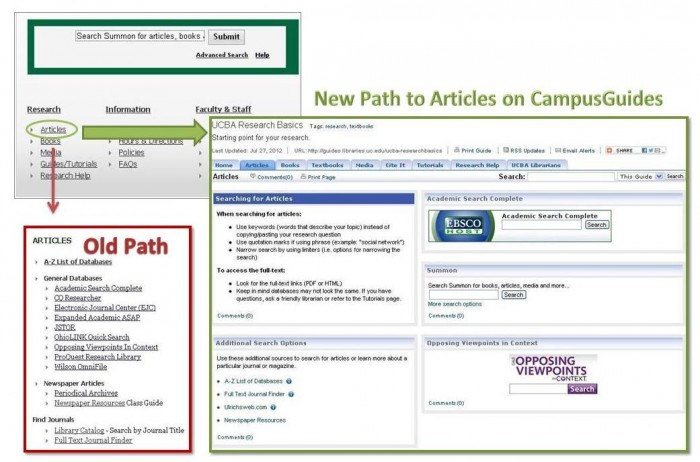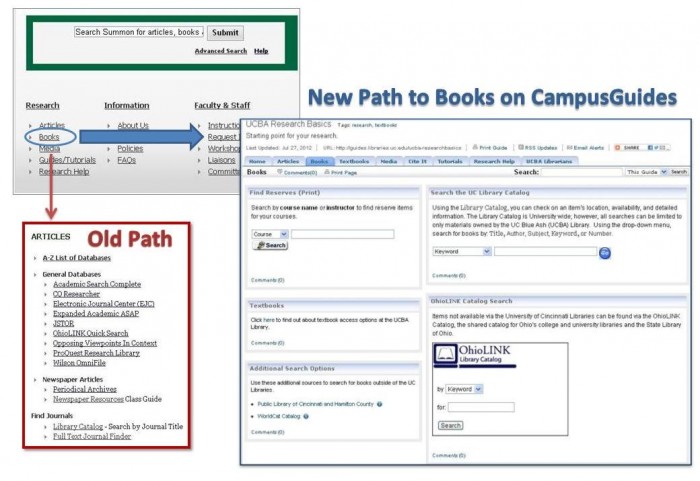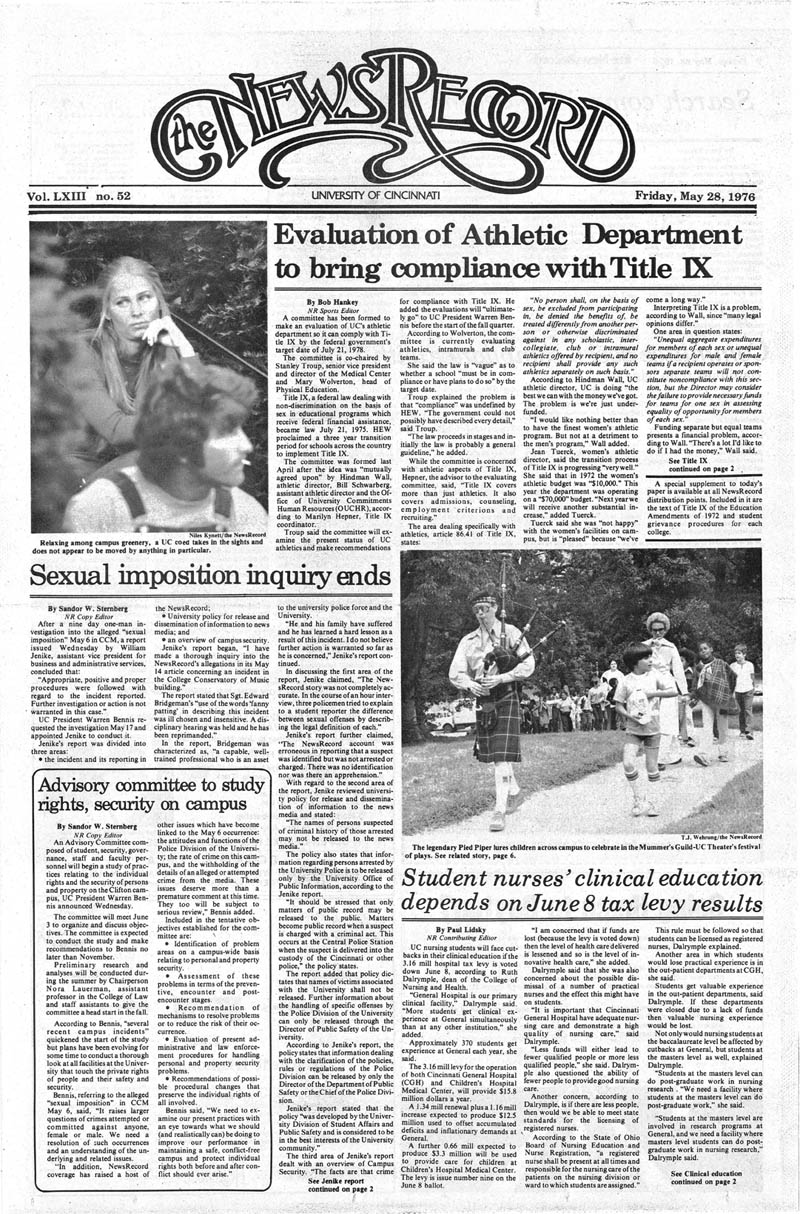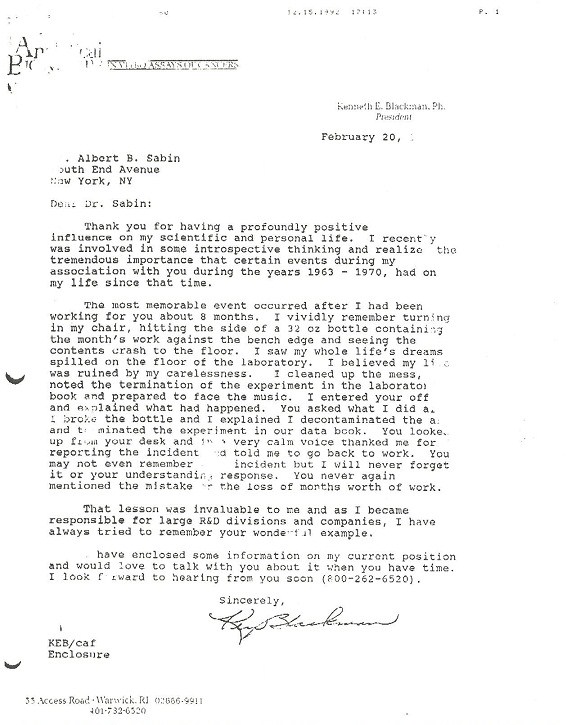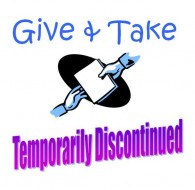The new Research Basics CampusGuide is now available! This guide provides a basic starting point for students as they begin research on any topic. Some of our Library homepage links have been updated to link to resources this new guide. For example, as illustrated below, the path to commonly used article resources will link to the Articles page of the UCBA Research Basics guide. Commonly used article resources found in the new guide include:
- A-Z Database List
- Academic Search Complete
- Summon
- Opposing Viewpoints
- Full Text Journal Finder
The Books link has also been changed to point to the Books page of the UCBA Research Basics guide. Commonly used book resources can be found here, including:
- UC Library Catalog
- OhioLINK Catalog
- Additional search options with links to e-Reference, WorldCat, and the Public Library of Cincinnati and Hamilton County

